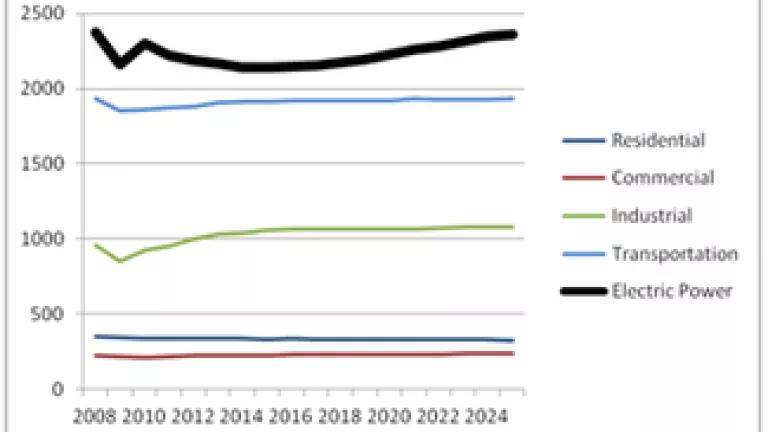Tar Sands Delay: the other big global warming decision for President Obama looms large - Power Plant Carbon Pollution Standards

While as many as 15,000 people joined hands to show President Obama that he must do the right thing on tar sands by rejecting Keystone XL, the event was also a turning point in efforts to combat U.S. global warming emissions as NRDC founder John Adams said: “a rejuvenated environmental movement will join with all those Americans who know our future will be built on clean innovation, not dirty destruction.” Now that President Obama has announced a new environmental review of the Keystone XL tar sands pipeline that is likely to last through early 2013, the decision on power plants looms large. So where are on the power plant carbon pollution decision and what is at stake? [Congrats to all those that have fought against the Keystone XL tar sands pipeline.]
WHAT IS THE CURRENT STATE OF PLAY ON THE POWER PLANT DECISION?
The decision on carbon pollution from power plants has been long overdue. So it was important when this week the Obama Administration took the first step to set limits on dangerous carbon pollution from power plants. The government announced that EPA will propose carbon pollution standards for new power plants, after a 90-day inter-agency review that began this week.
The Clean Air Act requires that President Obama establish legally enforceable standards that significantly reduce carbon emissions from both new and existing power plants. The Administration told the Supreme Court earlier this year that it would propose Clean Air Act rules for power plant carbon emissions in 2011, as part of an agreement to settle lawsuits brought by states and environmental groups including NRDC. Those standards are now overdue.
NRDC and other parties continue to work with EPA to agree on a schedule for setting standards that address carbon pollution from both new and existing power plants. It is essential that President Obama complete these standards as soon as possible in 2012.
WHAT IS AT STAKE?
Power plants are the nation’s largest source of dangerous carbon pollution. Each year power plants in the US pump more than two billion tons of carbon dioxide into the air – equivalent to one-third of all U.S. global warming pollution. Left unchecked that pollution will remain the dominant source of U.S. carbon pollution for the foreseeable future and could grow (see figure).
The decisions on Keystone XL and power plants are critical in shaping whether or not the U.S. can significantly reduce its global warming pollution. With the decision to establish carbon pollution standards for new cars and trucks and this decision on Keystone XL, the emissions from power plants looms large.
HOW DO THESE STANDARDS WORK?
With a go ahead from the White House, EPA could propose innovative standards for power plant carbon pollution that would create new jobs to replace and modernize dinosaur coal plants and position the power sector to be a sustainable engine of growth for the American economy in the decades ahead.
These Clean Air Act rules could significantly cut the carbon pollution from the nation’s power plants. They do this by requiring clear standards for how much carbon pollution can be emitted by the nations new and existing power plants. These standards help avoid locking in dirty sources of energy, spur the use of already available technologies (e.g., wind, solar, energy efficiency, and less polluting fossil fuel), and encourage smart operations by power plant owners. They are the kinds of actions that companies in the U.S. and around the world are already using. After all, new clean energy investments throughout the world were a $243 billion dollar market last year that grew at 30 percent from the previous year.
TIME TO GET ON WITH CARBON POLLUTION REDUCTIONS FROM POWER PLANTS
Forty-years after passage of the Clean Air Act, power plants are still free to dump unlimited amounts of carbon pollution into the air. As NRDC’s President said: “Many of America’s existing plants—especially coal-fired ones—have been around for 30, 40, even 50 years. Though some have embraced new technologies, many are outdated and inefficient dinosaurs.”
It is time to clean them up and move them into the modern era.
* Figure: data from Energy Information Administration, Annual Energy Outlook 2011.

